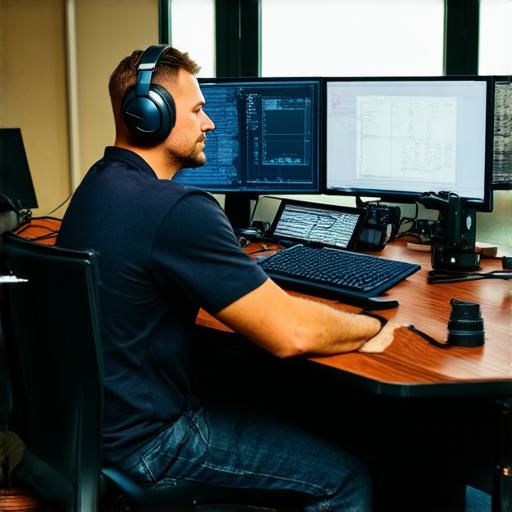<!DOCTYPE html>
Introduction
In today’s digital age, being a successful digital designer is more important than ever. With the increasing demand for high-quality design work across various industries, digital designers are in high demand. However, becoming a successful digital designer requires dedication, hard work, and a set of skills that can be honed over time.
Education
The first step towards becoming a successful digital designer is obtaining the necessary education. A degree in graphic design or visual communication can provide you with the foundational skills needed to excel in this field. However, if you don’t have a formal education, there are still many resources available to help you develop your skills.

Portfolio Development
Once you have acquired the necessary education, it’s time to start building your portfolio. Your portfolio should showcase your best work, including examples of your design process, sketches, drafts, and final products. It’s important to keep your portfolio up-to-date, as clients want to see that you are actively working on improving your skills.
Networking
Networking is an essential part of becoming a successful digital designer. Attend industry events, join design groups and communities online, and reach out to other designers for collaboration and mentorship opportunities. Building relationships with other designers can lead to new job opportunities and valuable insights into the industry.
Ongoing Learning
The field of digital design is constantly evolving, so it’s important to stay up-to-date on the latest trends and technologies. Attend conferences and workshops, read design blogs, and participate in online courses and tutorials. Continuous learning will help you improve your skills and keep you relevant in the industry.
Case Studies
One of the best ways to learn from successful digital designers is by studying their case studies. Case studies provide a detailed look at how designers approached specific challenges and created successful solutions. By analyzing these case studies, you can gain valuable insights into the design process and develop your own problem-solving skills.
Personal Experiences
Personal experiences are also a valuable resource for aspiring digital designers. Whether it’s working on personal projects or collaborating with other designers, gaining hands-on experience can be invaluable. It will help you develop your skills and build your portfolio, while also giving you a sense of accomplishment and satisfaction.
Expert Opinions
To gain a deeper understanding of the design industry, it’s important to seek out expert opinions from experienced designers. Read interviews with successful digital designers, attend design talks and conferences, and engage in online discussions with other designers. By seeking out expert opinions, you can gain valuable insights into the design process and develop your own unique perspective on the industry.
Real-Life Examples
Real-life examples of successful design work are also a valuable resource for aspiring digital designers. Studying the designs of successful companies and brands can provide inspiration and insight into what works and what doesn’t. By analyzing these real-life examples, you can develop your own design style and create high-quality work that stands out from the competition.
Summary
Becoming a successful digital designer requires dedication, hard work, and a set of skills that can be honed over time. By obtaining the necessary education, developing your portfolio, networking with other designers, staying up-to-date on the latest trends and technologies, and gaining hands-on experience, you can become a successful digital designer. Remember to seek out expert opinions and real-life examples of successful design work to gain inspiration and insight into the design process. With the right approach and mindset, anyone can achieve their dreams of becoming a successful



